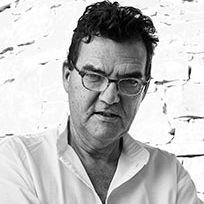As we progress into this new century I strongly suspect that the control of water will be by electronic solenoids like our dishwashers and washing machines.
Taps will disappear and we will be left holding remote controls or prodding steamy screens. Taps therefore as we know them today may have existed for only around a century and are perhaps destined like the horse and carriage to disappear into the mists of nostalgia.
I have therefore taken on the task of researching this century of taps and selecting the great classics from each decade. From their domestic origins in the late Victorian era through the mechanical angularity of the Edwardians, the curvaceous turn of the century French, the colonial twenties, the Deco thirties, the streamline fifties, the starry sixties to the nineteen seventies when it all seemed to begin again.
Each decade has been carefully considered and researched. I have visited many museums, countless salvage yards and been unexpectedly welcomed into castles, cottages and dealers’ dens. It has mostly been a journey of joy. One develops a passion for the chase, unearthing sometimes at great length at other times in an unexpected instant these forgotten art forms of history. But what does a true classic mean and how does a design become a classic. Foremost it stands the test of time, it is popular, a design which sold well in its day and continued to be demanded and of course it worked, it functioned, it did its job. Beautiful products, beautifully made, beautifully practical and still beautiful today.
All the taps I chose were still in working order, maybe in need of some grease or new washers but functioning even after in some cases a 100 years. These are art forms – sculptures not only for the eye but also for the hand – they look right and feel right.
This is of necessity a work in progress, first and foremost, because as you will see it did not stop with taps. Today we don’t buy baths we buy bathrooms so ceramic chinaware, accessories, lighting, baths and showers had to be added to complete each period. There are still gaps in some ranges and new decades will be added as production allows.
In the meantime I offer the results of my labours todate. I sincerely hope some of the pleasure I received from discovering and developing these products is transferred as you use these fabulous classics of the last century.
“I sincerely hope some of the pleasure I received from discovering and developing these products is transferred as you use these fabulous classics of the last century.”
Christo Lefroy Brooks
